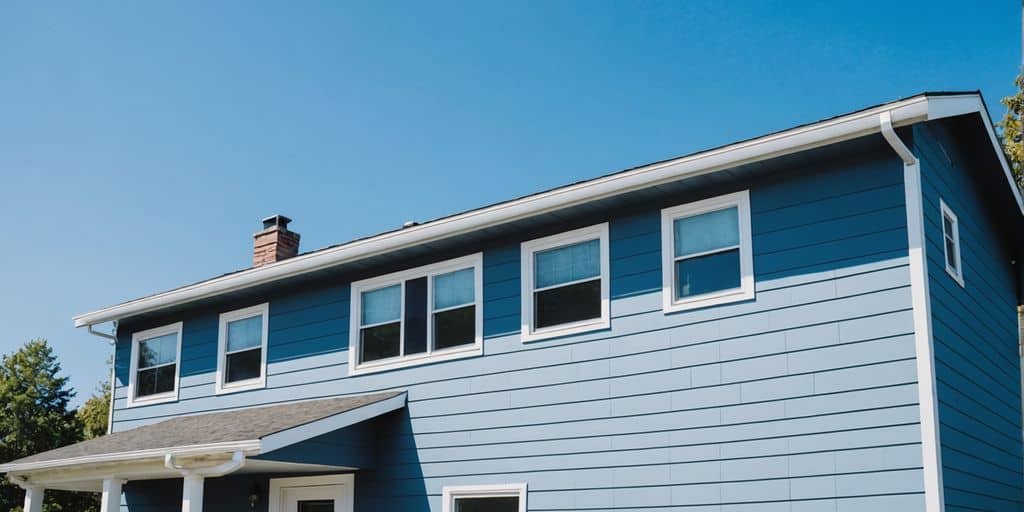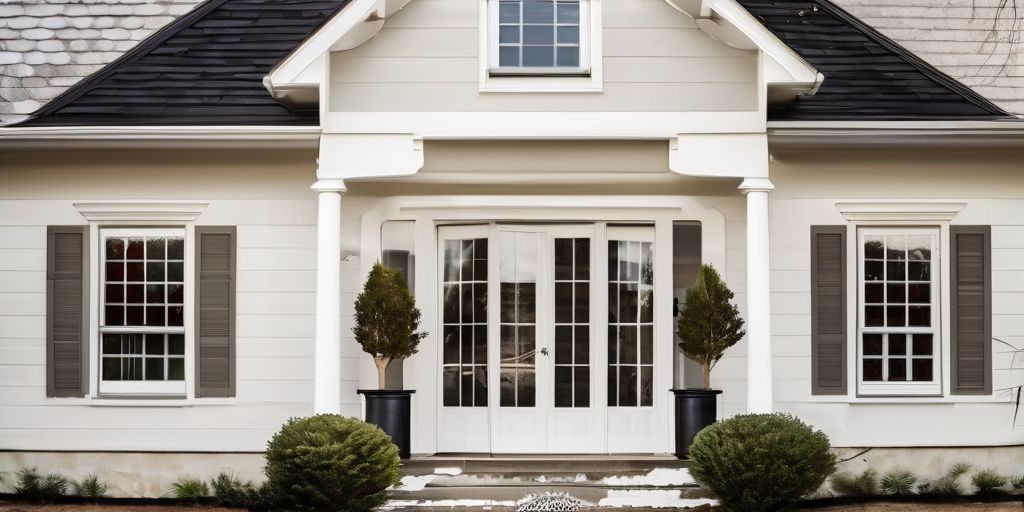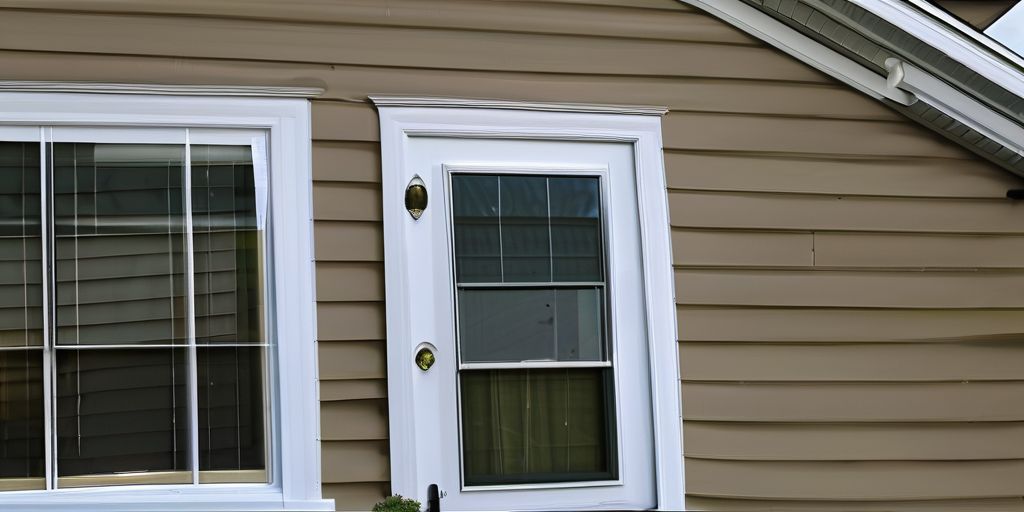Repainting faded vinyl siding can breathe new life into your home and boost its curb appeal. For homeowners in St. Catharines, understanding the best strategies for repainting is essential due to the local climate. This article will guide you through selecting the right paint, preparing your siding, and maintaining it for long-lasting results.
Key Takeaways
- Choose high-quality paint specifically designed for vinyl siding to ensure durability and proper adhesion.
- Thoroughly clean and inspect your siding before painting to achieve a smooth and lasting finish.
- Use primers and solar reflective coatings to protect against temperature fluctuations and UV damage.
- Regular maintenance, such as seasonal inspections and cleaning, will extend the life of your painted siding.
- Understand your warranty coverage to know what is protected and how to make a claim if needed.
Choosing the Right Paint for Vinyl Siding
Understanding Light Reflectance Value (LRV)
When selecting paint for your vinyl siding, understanding the Light Reflectance Value (LRV) is crucial. LRV measures how much light a color reflects. For light colors with an LRV of 57 or above, a high-quality 100% acrylic latex or acrylic blend paint is recommended. For darker colors with an LRV of 56 or lower, an approved solar reflective coating is essential to prevent heat distortion.
Selecting High-Quality Paints
Choosing the right paint involves more than just picking a color. Opt for high-quality paints specifically designed for vinyl siding. These paints adhere better and withstand temperature fluctuations and UV exposure. Consider the local climate in St. Catharines, where winters can be harsh. Make sure the paint you select can resist freezing temperatures and snow.
Importance of Solar Reflective Coatings
For darker colors, a solar reflective coating is vital. This type of coating helps to reflect sunlight, reducing heat absorption and preventing the siding from warping or buckling. This is especially important for colors with a lower LRV. Always follow the manufacturer’s instructions for the best results, ensuring a durable and long-lasting finish.
Preparing Your Vinyl Siding for Painting
Cleaning and Inspecting the Surface
Before you start painting, it’s crucial to clean your vinyl siding thoroughly. This removes any dirt, grime, or mildew that could prevent the paint from sticking properly. Here’s a simple cleaning solution you can use:
- Fill a bucket with 1/3 cup of laundry detergent, 2 cups of bleach, and 1 gallon of warm tap water.
- Use a soft cloth or a soft bristle brush to scrub the siding.
- Rinse the siding with clean water to remove any residue.
After cleaning, inspect the surface for any damage. Look for cracks, holes, or loose panels that need fixing before you paint.
Repairing Any Damage
Once you’ve inspected the siding, it’s time to repair any damage. Fixing cracks and holes ensures a smooth surface for painting. Use a vinyl siding repair kit to fill in any gaps or cracks. If you find any loose panels, secure them back in place with nails or screws.
Priming for Better Adhesion
Priming is a key step in preparing your vinyl siding for painting. A good primer helps the paint adhere better and last longer. Choose a primer designed specifically for vinyl siding. Apply the primer evenly and let it dry completely before you start painting.
By following these steps, you can ensure that your paint job will be durable and look great for years to come.
Remember, the right preparation can make all the difference in the final result. Happy painting!
Best Practices for Painting Vinyl Siding
Tools and Materials Needed
Before you start painting your vinyl siding, gather all the necessary tools and materials. Here’s a list to help you get started:
- High-quality acrylic paint designed for vinyl siding
- Primer suitable for vinyl
- Soft bristle brush or paint sprayer
- Drop cloths to protect the ground
- Painter’s tape
- Ladder
- Safety gear (gloves, goggles)
Step-by-Step Painting Guide
- Clean the Surface: Begin by thoroughly cleaning the siding to remove dirt and grime. This ensures better paint adhesion.
- Repair Any Damage: Inspect the siding for any cracks or damage and repair them before painting.
- Apply Primer: Use a primer designed for vinyl siding to create a strong foundation for the paint.
- Choose the Right Paint: Opt for high-quality acrylic paint. Avoid using a color that’s significantly darker than the original color to prevent warping from increased heat.
- Start Painting: Use a soft bristle brush or a paint sprayer for even application. Apply the paint in thin, even coats.
- Let it Dry: Allow the paint to dry completely between coats. This usually takes a few hours, depending on the weather.
By adhering to these foundational steps, you can significantly enhance the durability and appearance of your painted vinyl siding.
Common Mistakes to Avoid
- Skipping the Primer: Always apply a primer to ensure the paint adheres well.
- Painting in Extreme Weather: Avoid painting on very hot or cold days. The ideal temperature is between 50°F and 85°F.
- Using the Wrong Paint: Ensure you use paint specifically designed for vinyl siding to prevent peeling and cracking.
- Ignoring Safety: Always wear safety gear and ensure your ladder is stable.
By following these best practices, you can achieve a beautiful, long-lasting finish for your vinyl siding. Whether you’re near the Welland Canal or in another part of St. Catharines, these tips will help you get the job done right.
Maintaining Your Painted Vinyl Siding
Regular Cleaning Tips
Keeping your painted vinyl siding clean is essential for its longevity. Here are some tips:
- Rinse the siding with clean water to remove loose dirt.
- Use a soft cloth or a soft bristle brush with a mild detergent to wash the siding.
- Avoid harsh chemicals that can damage the paint and vinyl.
- Rinse again with clean water to remove any soap residue.
For tougher stains, like mildew or bird droppings, a mixture of water and mild detergent or a specialized vinyl siding cleaner can be effective.
Seasonal Inspections
Regular inspections help catch potential issues early. Aim to inspect your siding at least twice a year, ideally in spring and fall. Look for:
- Cracks or peeling paint
- Mold or mildew growth
- Any signs of moisture damage
Addressing these issues promptly can prevent more significant problems down the line.
Addressing Common Issues
Common issues with painted vinyl siding include fading, peeling, and cracking. Here’s how to handle them:
- Fading: Repaint areas that have lost their color to keep your home looking fresh.
- Peeling: Scrape off the peeling paint and apply a primer before repainting.
- Cracking: Fill in cracks with a suitable filler and repaint the area.
Pro Tip: Regular maintenance not only keeps your siding looking great but also extends its lifespan.
By following these simple steps, you can ensure your painted vinyl siding remains in top condition for years to come.
Understanding Warranty and Coverage
When repainting your vinyl siding, it’s crucial to understand the warranty and coverage options available. This ensures that your investment is protected and that you know what to expect if issues arise. Here are some key points to consider:
Reading the Fine Print
Before committing to a paint product or service, always read the fine print of the warranty. Look for details on what is covered and for how long. Some warranties may have specific conditions, such as requiring professional installation or regular maintenance. Always ask for clarification if something is unclear.
What is Typically Covered
Warranties for vinyl siding paint can vary, but they often cover:
- Color retention: Ensures your siding maintains its appearance and curb appeal for years.
- Fading: Protection against significant color changes over time.
- Cracking: Coverage for any cracks that may develop in the paint.
- Peeling: Assurance that the paint will not peel away from the siding.
Making a Warranty Claim
If you need to make a warranty claim, follow these steps:
- Document the issue: Take photos and note the date when you first noticed the problem.
- Contact the manufacturer or service provider: Provide them with the documentation and details of the issue.
- Follow their instructions: They may require an inspection or additional information.
- Keep records: Maintain all correspondence and documentation related to the claim.
Understanding your warranty can save you time and money in the long run. It’s always better to be informed and prepared.
In St. Catharines, where weather conditions can be harsh, having a solid warranty is even more important. Make sure your warranty covers the specific challenges posed by the local climate.
Enhancing Curb Appeal with Vinyl Siding
Choosing the Right Colors
Selecting the perfect color for your vinyl siding can make a significant difference in your home’s curb appeal. Here are some tips:
- Consider the character of your home: For a traditional look, warm beiges or classic whites are ideal. For a modern touch, think about dark grays or navy blues.
- Blend with existing hardscaping: Ensure that your siding choices blend well with existing hardscaping features like driveways, walkways, and retaining walls.
- Test samples: Always test paint samples in different lighting conditions to see how they look throughout the day.
Incorporating Textures and Grains
Textures and grains can add depth and authenticity to your vinyl siding. Here are some ideas:
- Deep grains: These can mimic the look of real wood, adding a rustic charm to your home.
- Smooth finishes: For a sleek, modern appearance, opt for smooth finishes.
- Mix and match: Combine different textures to create a unique and dynamic facade.
Mixing Materials for a Dynamic Look
Combining vinyl siding with other materials can create a visually appealing exterior. Consider these combinations:
- Vinyl and stone: This mix can add a touch of elegance and durability.
- Vinyl and brick: A classic combination that offers a timeless look.
- Vinyl and wood: For a more natural and warm appearance.
Remember, the goal is to make your vinyl siding not just look great, but feel right for your home and its surroundings. Sometimes, a nod to local architecture can make all the difference. For instance, a color palette inspired by the hues of the Welland Canal could resonate well with the St. Catharines community.
Weather Considerations for St. Catharines
Impact of Winter Weather
Winter in St. Catharines can be harsh, with cold temperatures, snow, and ice. These conditions can affect your vinyl siding paint. It’s important to protect your siding to ensure it lasts through the winter months. Here are some key points to consider:
- Cold temperatures can cause paint to crack and peel.
- Snow and ice can lead to moisture buildup, which can damage the paint.
- Wind can carry debris that may scratch or chip the paint.
Protecting Your Siding from Elements
To protect your vinyl siding from the elements, follow these tips:
- Clean your siding before winter to remove dirt and debris.
- Apply a high-quality, weather-resistant paint.
- Use a primer to help the paint adhere better.
- Inspect your siding regularly for any damage.
Seasonal Maintenance Tips
Regular maintenance is key to keeping your vinyl siding in good condition. Here are some seasonal tips:
- Fall: Clean your siding and check for any damage. Make any necessary repairs before winter.
- Winter: Keep an eye on your siding for any signs of damage from snow and ice. Remove any snow buildup to prevent moisture damage.
- Spring: Inspect your siding for any damage from the winter. Clean your siding and make any necessary repairs.
Remember, the quality of your paint job not only affects the appearance of your home but also its ability to withstand the harsh St. Catharines winter weather.
By following these tips, you can help ensure your vinyl siding remains in good condition throughout the year.
When planning for the weather in St. Catharines, it’s important to consider how it can affect your home’s exterior. From harsh winters to humid summers, the elements can take a toll on your siding and trim. Instead of opting for expensive replacements, why not explore a more affordable solution? Our expert team at We Paint Siding specializes in refreshing aluminum and vinyl siding, giving your home a new look at a fraction of the cost. Visit our website to learn more about our services and see how we can help you transform your home.
Conclusion
Repainting your faded vinyl siding in St. Catharines can breathe new life into your home and protect it from harsh weather. By choosing the right paint, following proper preparation steps, and maintaining your siding regularly, you can ensure a long-lasting and beautiful finish. Remember, a little effort goes a long way in keeping your home looking its best. Happy painting!
Frequently Asked Questions
How often should I clean my painted vinyl siding?
You should clean your painted vinyl siding once a year with warm water and mild soap. This helps keep it looking good and extends its life.
What type of paint should I use for vinyl siding?
Use high-quality paint made for vinyl siding. This type of paint will last longer and resist fading, chalking, and cracking.
What are the first steps to ensure the paint on vinyl siding lasts?
Start by preparing the surface well, including using a primer. Regular maintenance and yearly checks are also important.
How do I handle tough stains on painted vinyl siding?
For tough stains, use gentle cleaning products made for vinyl siding. Avoid harsh chemicals or rough tools that could damage the paint.
What maintenance is needed to protect painted vinyl siding from weather?
Check for peeling, cracking, or fading every year. Use protective coatings if needed and prepare the siding for seasonal changes to guard against UV damage and moisture.
When should I repaint my vinyl siding?
Repaint your vinyl siding if you see a lot of fading, peeling, or cracking. Regular checks will help you know when it’s time for a touch-up or a full repaint.





